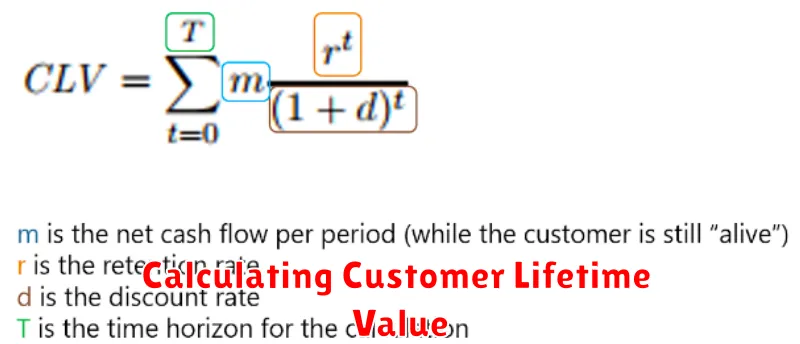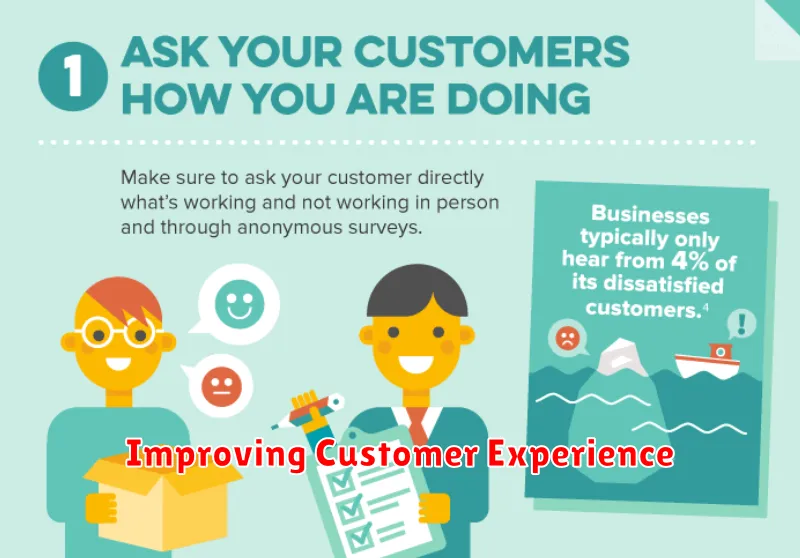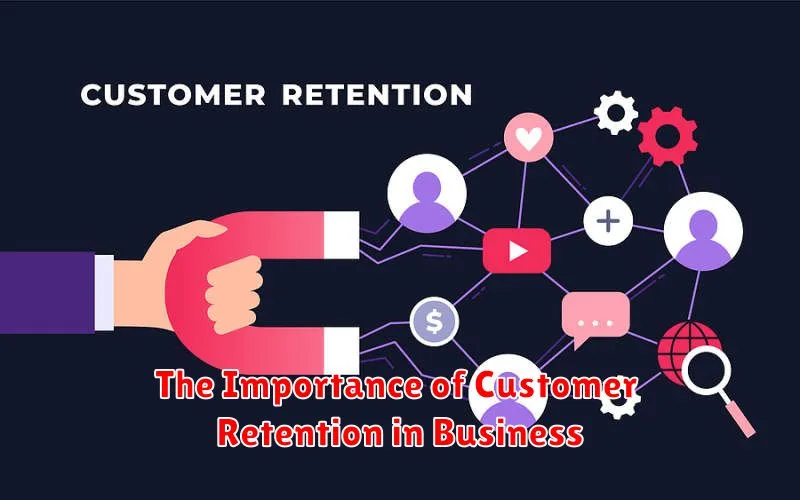In today’s competitive business landscape, customer retention is more critical than ever. Acquiring new customers is undeniably important for growth, but retaining existing customers offers a multitude of benefits, impacting everything from revenue and profitability to brand reputation and market stability. This article explores the importance of customer retention and why businesses should prioritize strategies that foster long-term customer loyalty.
Customer retention focuses on building strong relationships with current customers to encourage repeat business. It’s about providing exceptional value, personalized experiences, and proactive support that cultivates loyalty and reduces customer churn. Understanding the core principles and benefits of effective customer retention programs can significantly impact a business’s bottom line and contribute to sustainable growth. By investing in customer retention strategies, businesses can create a loyal customer base that acts as a strong foundation for long-term success.
Why Retention Beats Acquisition
While acquiring new customers is essential for growth, retaining existing ones offers a more cost-effective and sustainable path to profitability. It typically costs significantly more to acquire a new customer than to retain an existing one. Resources allocated to acquisition campaigns, such as marketing and advertising, can be substantially higher than those dedicated to retention efforts like loyalty programs or personalized communication.
Furthermore, retained customers often have a higher lifetime value. They tend to spend more over time, become brand advocates through positive word-of-mouth referrals, and provide valuable feedback that can help improve products and services.
Increased profitability is another key benefit of prioritizing retention. A small increase in customer retention rates can translate to a significant boost in profits, due to the compounding effect of repeat purchases and reduced acquisition costs. Focusing on fostering strong customer relationships ultimately yields a more stable and predictable revenue stream.
Calculating Customer Lifetime Value

Understanding Customer Lifetime Value (CLTV or CLV) is crucial for assessing the long-term profitability of your customer relationships. It represents the total revenue a business expects to generate from a single customer throughout their relationship.
Several methods exist for calculating CLTV, each with varying levels of complexity. A simple and commonly used approach is:
Simple CLTV Calculation
CLTV = Average Purchase Value * Average Purchase Frequency * Average Customer Lifespan
For example:
- If your average customer spends $50 per purchase,
- purchases 4 times a year, and
- remains a customer for 3 years,
then their CLTV is $50 * 4 * 3 = $600.
More sophisticated models incorporate factors such as customer churn rate and discount rate for future revenue. However, even the basic calculation provides valuable insights into the long-term value of retaining customers and making informed decisions about sales, marketing, and customer service investments.
Improving Customer Experience

A crucial aspect of customer retention is providing an exceptional customer experience. Positive experiences foster loyalty and encourage repeat business. By focusing on exceeding customer expectations, businesses can cultivate strong relationships and reduce churn.
Several key strategies can enhance the customer experience. Actively listen to customer feedback and use it to improve products and services. Personalize interactions to make customers feel valued and understood. Provide omnichannel support, allowing customers to engage with your business through their preferred channels.
Streamlining processes, such as checkout and customer service interactions, also contributes significantly to a positive experience. Minimize wait times and ensure efficient resolution of issues. Proactive communication, such as order updates and helpful tips, demonstrates care and builds trust.
Loyalty Programs That Work
Effective loyalty programs go beyond simple discounts. They foster a sense of community and make customers feel valued. A well-structured program drives repeat business and encourages advocacy.
Points-based systems remain a popular choice. Customers earn points for purchases, redeemable for rewards. Tiered programs offer increasing benefits for higher spending levels, motivating continued engagement.
Gamified loyalty programs introduce elements of fun and competition. Challenges, badges, and leaderboards can create excitement and boost participation. This approach is particularly effective with younger demographics.
Partnership programs allow businesses to collaborate and offer broader rewards. Customers benefit from access to a wider range of products and services, increasing the program’s overall value proposition.
Personalized rewards based on purchase history and preferences demonstrate that a business understands its customers. This tailored approach strengthens the customer relationship and fosters greater loyalty.
Follow-Up Emails and Surveys
Following up with customers after a purchase or interaction is crucial for retention. A simple thank you email can go a long way in building rapport. More targeted follow-ups can include personalized product recommendations based on past purchases or offering exclusive discounts for repeat customers.
Surveys provide invaluable insights into customer satisfaction and areas for improvement. Keep surveys concise and focused, asking specific questions about their experience. Acting on the feedback received demonstrates a commitment to customer needs and fosters loyalty.
Examples of effective follow-up strategies include:
- Post-purchase feedback requests
- Product registration follow-up with usage tips
- Periodic satisfaction surveys
- Win-back campaigns for inactive customers
Training Teams for Better Service
Investing in employee training is crucial for enhancing customer service and, consequently, customer retention. Well-trained teams possess the knowledge and skills necessary to handle customer inquiries efficiently and effectively. This leads to improved customer satisfaction and fosters loyalty.
Training programs should focus on developing key competencies such as product knowledge, communication skills, problem-solving strategies, and empathy. Regular refresher courses ensure that employees stay up-to-date with the latest information and best practices. Effective training empowers teams to confidently address customer needs, resolve issues proactively, and build strong customer relationships.
Furthermore, training initiatives should emphasize the importance of consistent service delivery. Customers value predictable and reliable experiences, which can be achieved through standardized procedures and consistent messaging across all customer touchpoints.

